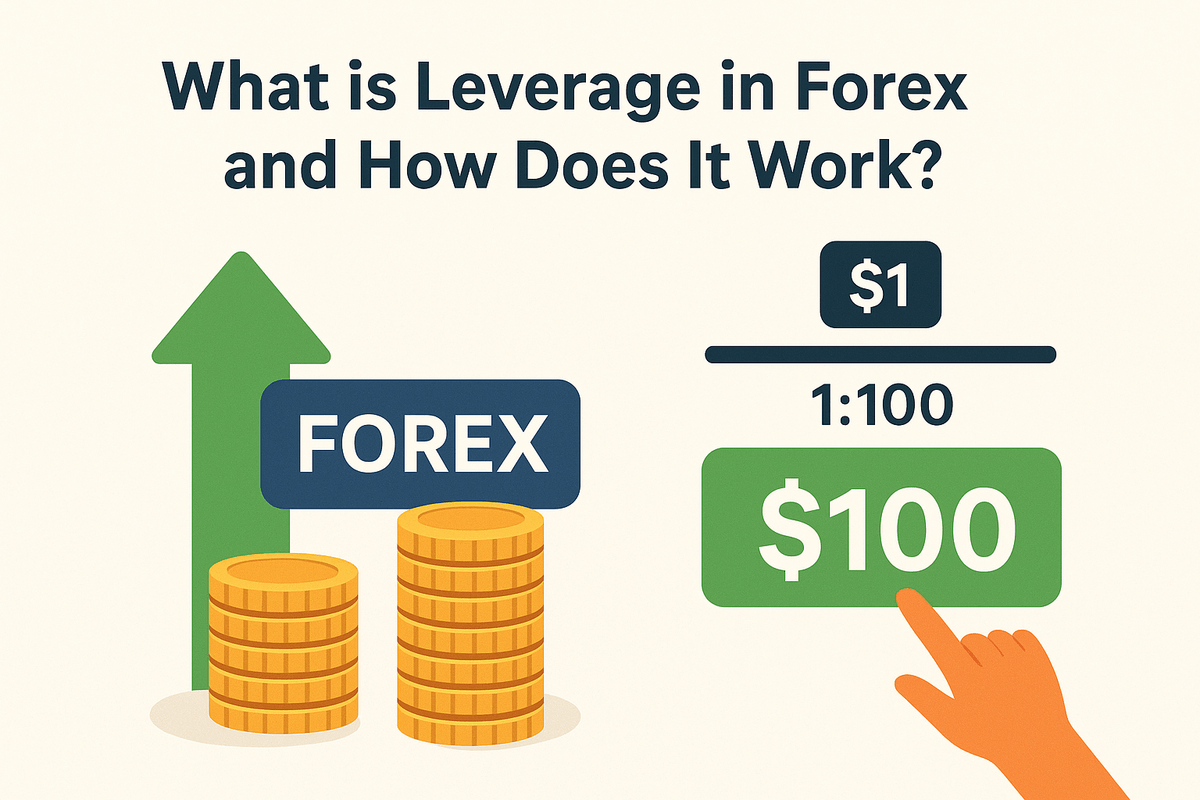Many new traders often ask, ‘What is Leverage in Forex and How Does It Work?’ Leverage in forex is one of the most exciting but also dangerous parts of trading. In simple words, leverage allows you to control bigger trades with a smaller amount of money by borrowing from your broke.
For example, if you have $100 in your account and your broker gives you 1:100 leverage, you can control a trade worth $10,000. This means even small moves in the market can bring big profits — or big losses.
In this guide, I’ll break down leverage in forex, how it works, the risks involved, and how you can manage it wisely.
Key Points
- Leverage in forex means borrowing money from your broker to trade larger positions.
- It magnifies both profits and losses, making it a double-edged sword.
- Brokers require traders to hold a percentage of the trade in cash, known as margin.
- Higher volatility pairs often come with higher margin requirements.
- Smart traders use risk management strategies to avoid blowing accounts.
Understanding Leverage in Forex
The forex market is the biggest financial market in the world, with over $5 trillion traded daily. Traders buy and sell currency pairs like EUR/USD, GBP/JPY, or USD/NGN, hoping the exchange rate moves in their favor.
Without leverage, most retail traders would struggle to participate, since trading even a small lot requires thousands of dollars. That’s where leverage steps in.
Example: If you want to buy $100,000 worth of EUR/USD, but your broker requires only 1% margin, you only need $1,000 in your account to open that trade. The broker covers the rest through leverage.
How Leverage Works in Forex
Let’s say you open a forex account with $1,000.
- With 1:50 leverage, you can trade up to $50,000.
- With 1:100 leverage, you can trade up to $100,000.
- With 1:500 leverage, you can trade up to $500,000.
That sounds amazing, right? But here’s the catch — just as leverage increases potential profits, it also amplifies losses.
Margin Requirements and Leverage Ratios
Margin is the minimum capital your broker requires to keep a trade open. The lower the margin requirement, the higher the leverage you can use.
| Margin Requirement | Leverage Ratio |
|---|---|
| 5% | 20:1 |
| 2% | 50:1 |
| 1% | 100:1 |
| 0.5% | 200:1 |
For example, if you’re trading a $100,000 position with 1% margin (100:1 leverage), you only need $1,000 in your account.
The Risks of Forex Leverage
Leverage is powerful, but here are the risks every trader should know:
| Risk | What It Means |
|---|---|
| Magnified Losses | Even a small market move can wipe out your account. |
| Margin Calls | If equity falls below margin requirements, your broker may force-close your trades. |
| Psychological Pressure | High leverage can lead to emotional trading and poor decisions |
| Volatility Exposure | Some pairs move wildly, making high leverage more dangerous |
Strategies to Manage Leverage Risk
- Use lower leverage ratios (10:1 or 20:1 is safer for beginners).
- Always set stop-loss orders to cap potential losses.
- Limit your position size — don’t risk more than 1–2% of your account per trade.
- Diversify trades instead of going all in on one currency pair.
- Monitor your margin level to avoid margin calls.
- Use a demo account first to practice handling leverage
Forex Leverage vs Stock Leverage
| Market | Typical Leverage | Why It Differs |
|---|---|---|
| Forex | Up to 100:1 or 500:1 | Currencies move less than 3% daily, allowing higher leverage |
| Stocks | 2:1 to 4:1 | Stocks are more volatile, so regulators limit leverage |
| Futures | Around 15:1 | Moderate leverage because of contract size and volatility |
FAQ on Forex Leverage
Q1: What is the best leverage for beginners in forex?
The best leverage for beginners is usually 1:50 or 1:100. It gives you flexibility while keeping risk manageable.
Q2: Can I lose more money than I invest with leverage?
Yes. If your broker does not provide negative balance protection, your losses can exceed your deposit.
Q3: What is a margin call in forex?
A margin call happens when your equity falls below the broker’s margin requirement. If you don’t add funds, your trades may be closed automatically.
Q4: Why do brokers offer high leverage like 1:500 or 1:1000?
High leverage attracts traders, but it’s up to you to use it wisely. Brokers make money on spreads, whether you win or lose.
Q5: How do I safely use leverage?
Use small lot sizes, apply stop losses, and never risk more than you can afford to lose.
Final Thoughts
So, if you’ve ever wondered, ‘What is Leverage in Forex and How Does It Work?’, the answer is simple: it’s a powerful tool that can help you grow your trading account faster — but only if used wisely with proper risk management

